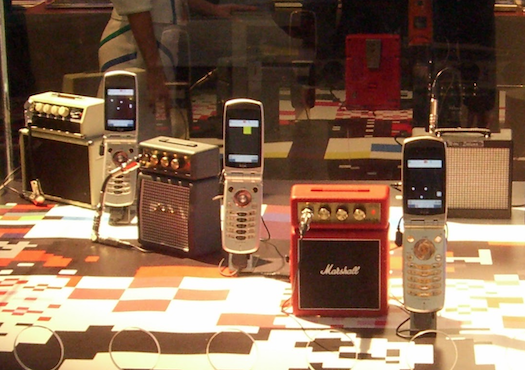Radio Tomorrow with James Cridland
In Canada recently, I heard a little bit of history – or, so it seemed to me. Radio executives were openly banging the drum for FM chips in phones: an argument I thought was long since dead.
You can understand why this discussion is still live in Canada. Some research I did about mobile phone data costs seems to point to Canada being exceptionally expensive for mobile data. In comparison to Australia (roughly the same population and land mass), Canadians pay almost FIVE TIMES MORE for a monthly plan that gives a THIRD LESS DATA. (I put this in capital letters because it still surprises me).
Perhaps Canadian radio broadcasters sense an opportunity if FM chips are enabled. I’m not sure there is one, to be honest.
As devices, mobile phones already significantly underperform when it comes to live, linear radio (whether streamed or delivered via FM). Research of UK radio listeners, on page 10 of this PDF, appears to show live radio accounting for less than 20% of all audio consumed on a phone. The most interactive device that we own, always within arm’s reach, is not the most ideal device for listening to an unpersonalised live stream, it would seem.
It’s also not a great user experience. There are no logos and virtually no metadata when listening to FM radio (and in Canada, like the US and Australia, even RDS signals are exotic in many markets). The very action of tuning into a radio station requires the listener to remember a random number for no reason other than a historical anachronism. The company that got closest to fixing the user experience on mobile, Emmis’s NextRadio, wasn’t supported by other parts of the North American radio industry, and regrettably has joined Nokia’s Visual Radio in the waste bin of good ideas.
“But radio is most important in times of emergency”, claim the radio companies. But in reality, if an emergency, or a big news story, happens in the evenings or weekends, recent evidence suggests radio won’t cover it anyway. SMS and app alerts are much more effective at communicating immediate peril, like weather events or fire. If radio had a part to play here once, it doesn’t any more. (The aftermath from emergency, as a community starts putting things together? That’s a very different thing, where radio excels.)
In any case, the technology is against it. The antenna used for FM or DAB+ reception in a mobile phone is the headphone cable: but that’s something that doesn’t exist in Apple or high-end Google phones, which use Bluetooth. Bluetooth headphones are a challenge with electronic measurement, too. And the strong AM stations that exist in Canadian metro areas? There’s only ever been one mobile phone with AM built-in, and the reason you don’t know about it is that it was fifteen years ago, and it was rubbish.
There’s plenty of evidence that Canadian listeners use streaming rather less than their neighbours in the US. The Canadian radio companies could lean on the CRTC to more effectively regulate the price of mobile data from the cellular networks. But they won’t, because the Canadian radio companies ARE the cellular networks.
Indeed, the cellular networks are the folks calling the shots in terms of whether FM chips are enabled or not. If the Canadian cellular networks aren’t pressuring the likes of Google and Apple for FM chips to be enabled – and let me remind you again, they own the FM radio networks – that points to a bigger issue.
Let’s use our energy and focus on delighting our audience, not trying to capture a magic unicorn that offers, at best, dubious benefit.
About The Author
James Cridland, the radio futurologist, is a conference speaker, writer and consultant. He runs the media information website media.info and helps organise the yearly Next Radio conference. He also publishes podnews.net, a daily briefing on podcasting and on-demand, and writes a weekly international radio trends newsletter, at james.crid.land.
Contact James at [email protected] or @jamescridland



